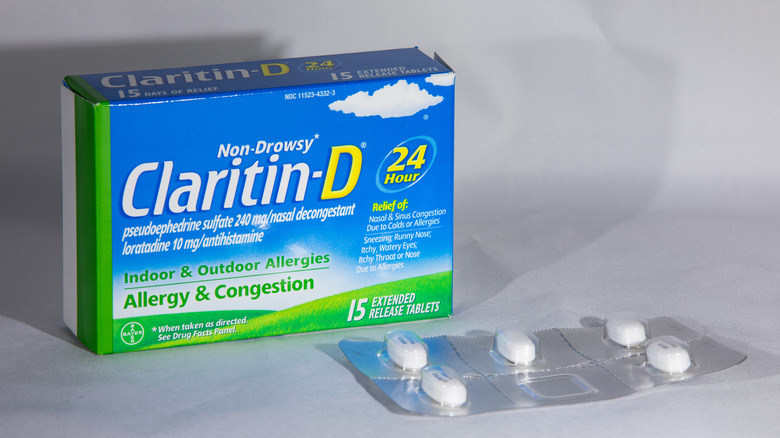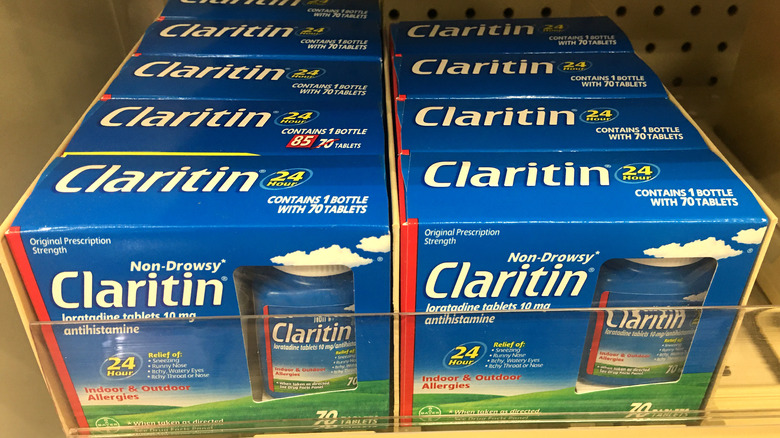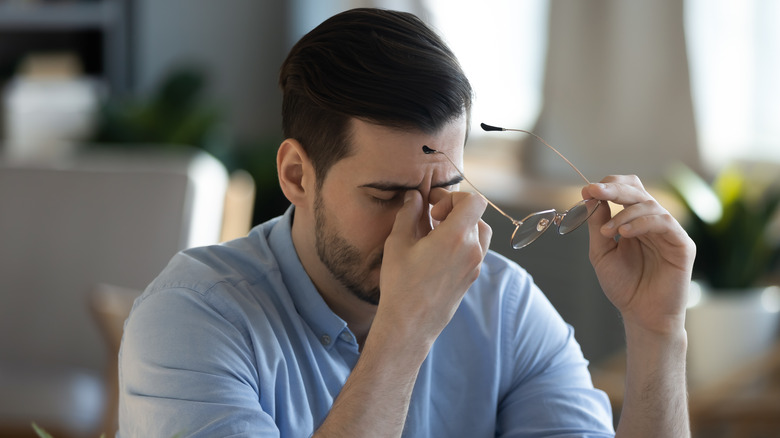This Is How Long It Takes For Claritin To Start Working
According to Drugs.com, Claritin is the brand name of loratadine, and it has been approved by the U.S. Food and Drug Administration (FDA). It's an antihistamine sold over the counter, but it is also prescribed for various allergic reaction symptoms, including watery eyes, runny nose, sneezing, and hay fever. DrugBank says Claritin works on selective histamine receptors outside the brain and spinal cord. The drug binds to these receptors found on the surface of the epithelial and endothelial cells, helping to reduce the severity of histamine-mediated symptoms.
If you've been prescribed Claritin, you might be unsure about the drug's efficacy. Ultimately, factors like your medical history and underlying conditions can help doctors determine how much Claritin needs to be prescribed, the length of time to take the drug, and even the duration between successive doses. Here is how long Claritin takes to work, how to use it effectively, and the various side effects associated with the drug.
How long does it take for Claritin to start working?
According to Healthline, Claritin can be compared to other antihistamines like Zyrtec. The mechanism of action between antihistamines is not the same, but Claritin has its perks. The source deems Claritin to be long-acting. Unlike other antihistamines, the drug reduces your allergies in about 24 hours after taking a single dose.
Claritin comes in different forms, including tablets, oral suspension, and syrup. As a guide, WebMD recommends taking the drug orally or as directed by a health expert. If your doctor deems a specific type is best, it's crucial to follow their prescription. WebMD also advises chewing the tablet well before swallowing if you take chewable Claritin tablets. If you're taking the liquid form, it's best to measure each dose with the plastic spoon attached to the bottle.
The National Health Service (NHS) notes that adults and children above 2 years old can take Claritin with or without food. However, liquified Claritin might be easier for kids to take than tablets. Doses for adults and children may differ, per the NHS. According to the Mayo Clinic, adults and children 6 years old and above can take 10 milligrams of the chewable tablet form once a day. The same dose applies to the liquid-filled Clairin capsules. For the Claritin solution, adults can take 2 teaspoonfuls or 10 milliliters once a day. However, 5 milliliters once daily should suffice for children between 2 and 6 years old.
Common side effects of Claritin
Some common side effects of loratadine include sore throat, chronic fatigue, itchy eyes, diarrhea, and stomach pains (via MedlinePlus). The source notes other severe symptoms like skin rashes, hives, or difficulty breathing can occur, but they are rare. The Cleveland Clinic also notes that some antihistamines can cause depression and emotional lability. However, studies into this connection are far less conclusive.
When taking Claritin, Drugs.com advises against driving using heavy machinery, driving, or engaging in activities that require alertness until the drug has fully kicked in. The source notes that loratadine may cause drowsiness when you take a dose beyond the recommended prescription.
According to The American Association of Retired Persons (AARP), some critical side effects of this drug are linked to antihistamines or second-generation antagonists, a special class of medication to which Claritin belongs. As a second-generation H1 antagonist, Claritin can block acetylcholine, a neurotransmitter in the nervous system. This can make it difficult to sleep, per the AARP.



